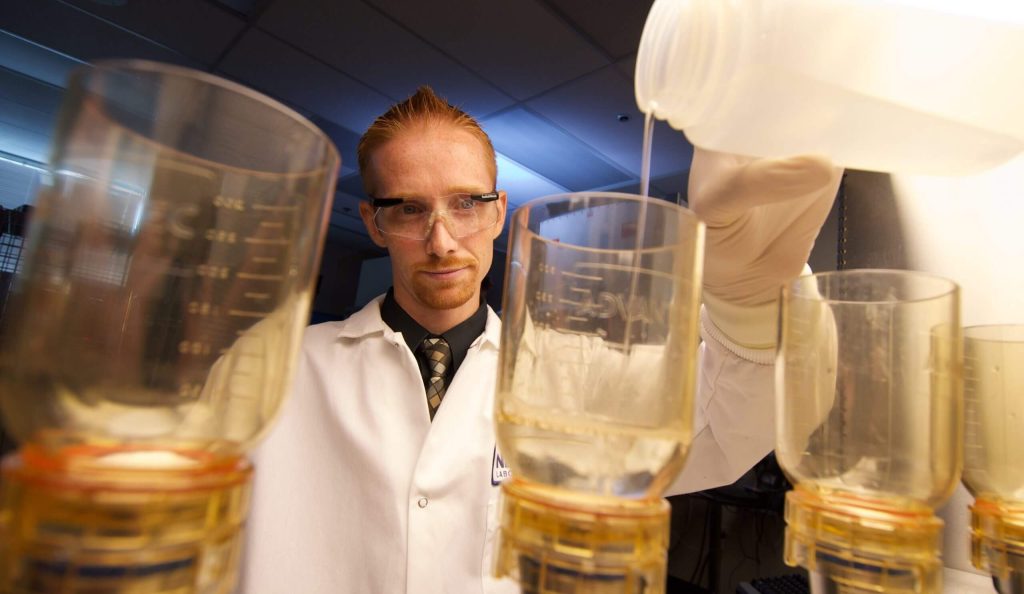
What is Bioburden Testing?
The Bioburden Test determines the total number of viable microorganisms in or on a medical device, container, or component. It is performed on any product that requires control and/or monitoring of bioburden counts, usually as part of a sterilization program. This test acts as an early warning system for possible production problems that could lead to inadequate sterilization. It is also used to calculate the necessary dose for effective radiation sterilization and to monitor product routinely as part of quarterly dose audits.
For additional information on coordinated quarterly dose audits (QDA), visit Radiation Sterilization.
Nelson Labs performs this test in accordance with ANSI/AAMI/ISO 11737-1 and is most commonly referenced in the Radiation Sterilization standards (ANSI/AAMI/ISO 11137-1 & 2) and the EO Sterilization standard (ANSI/AAMI/ISO 11135).
Applicable Standards
- ANSI/AAMI/ISO 11737
- ANSI/AAMI/ISO 11137
- ISO 11135
- 1174
- EN 13795
Study Outline
Routine testing of medical devices should be performed to demonstrate that the manufacturing process remains in control. The appropriate frequency and number of samples depend upon the sterility assurance level (SAL), type of product, type of sterilization used, environmental control, and the process controls of the manufacturer.
In order to validate a bioburden test, a recovery efficiency needs to be performed. There are essentially two approaches available: repetitive treatment (also referred to as exhaustive recovery) or product inoculation. Ideally, a recovery efficiency should be established prior to the start of any bioburden test. It should be performed on a minimum of three samples. The recovery efficiency is then validated and can be applied to all future testing of that product.
The AAMI Radiation Sterilization guideline (ANSI/AAMI/ISO 11137) mandates testing 10 samples for bioburden with each quarterly dose audit. Monthly bioburden testing may be required depending on the validated sterilization dose.
For products validated using the Industrial Ethylene Oxide Sterilization Guideline (AAMI/ANSI/ISO 11135), the type and frequency of bioburden tests performed will also vary with the method used in the initial validation. Most products are validated using the overkill method, where performing bioburden testing of 3 – 10 samples quarterly is sufficient. Products validated using the absolute bioburden method require frequent and significant bioburden testing. Even products validated with the BI/bioburden method should be tested periodically (at least quarterly) for bioburden.
Bioburden tests may include aerobic bacteria, spores, aerobic fungi (yeasts and molds), and anaerobes. Many factors enter into the choice of the type of tests most appropriate for your product. Generally, one should test for aerobic bacteria and fungi.
For products that cannot be tested using the extraction method such as liquids, powders, or products with low bioburden, the Most Probable Number (MPN) test may be utilized. This testing involves immersing the product directly in nutritive media and following a seven-day incubation, scoring the media for growth or no growth.
The method of obtaining samples for bioburden influence the test results. The preferred method for evaluating products or processes is to obtain random samples. These samples may be selected from routine production, which should include products produced at different times during the production of a single lot. The selected production lot needs to be representative of typical processing and conditions and should include all steps of manufacturing except sterilization. Samples may be obtained from in-process rejected materials if those materials have been subjected to the same processing conditions used for the remainder of the lot. Please be as clean as possible when sampling.


